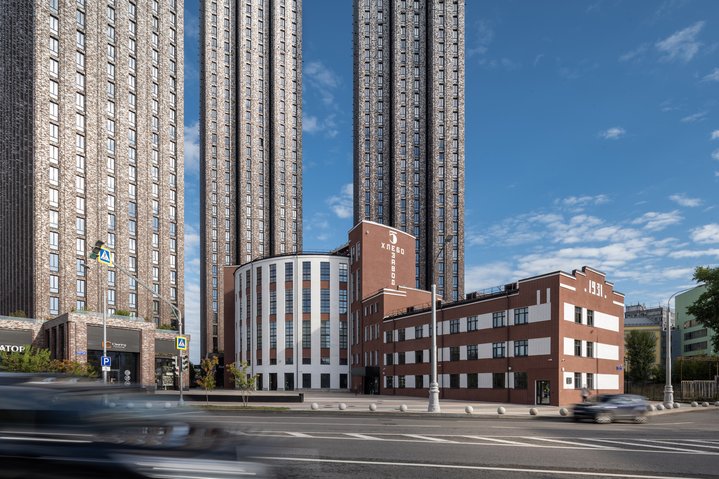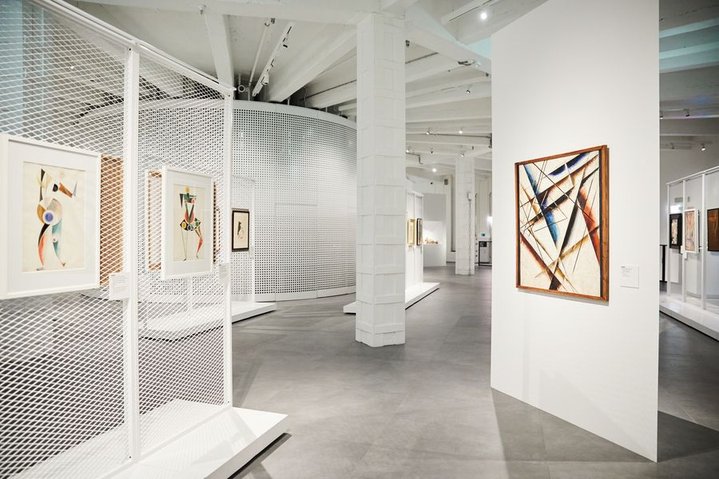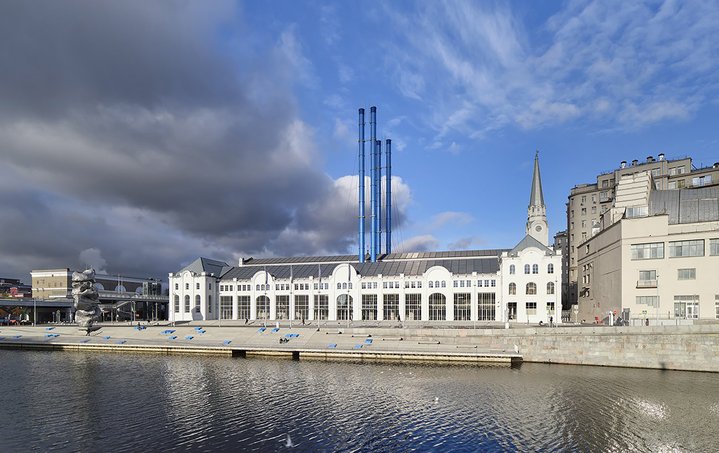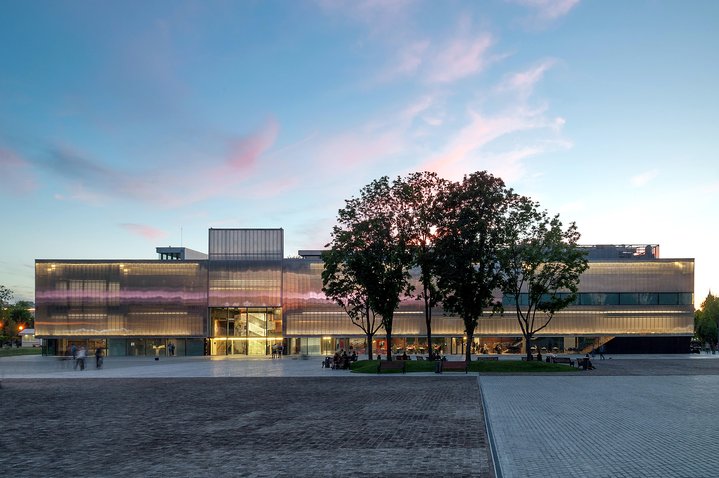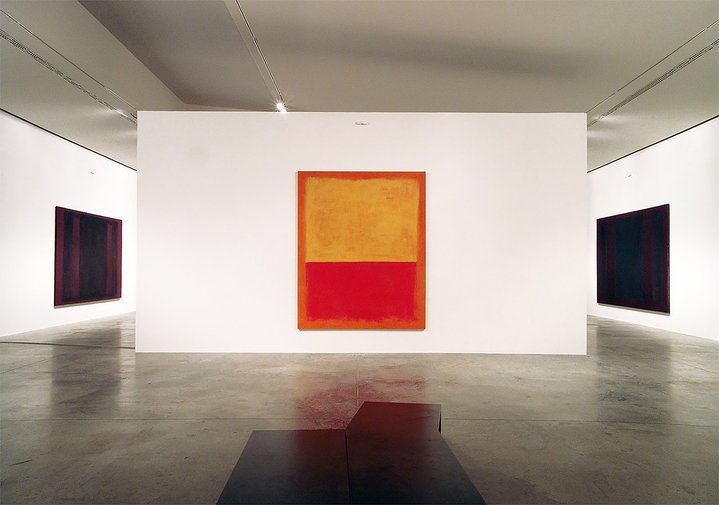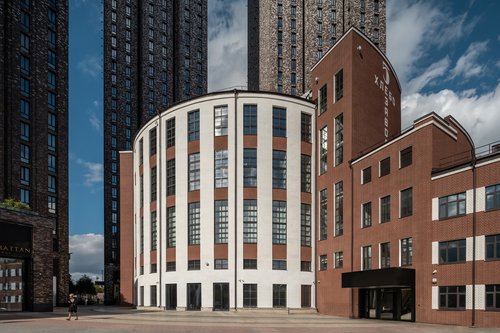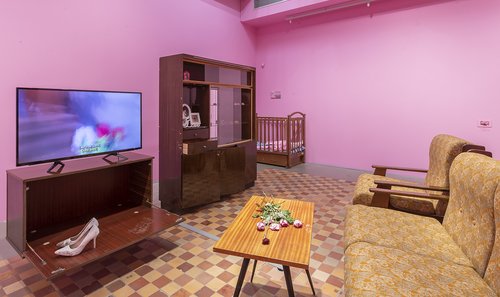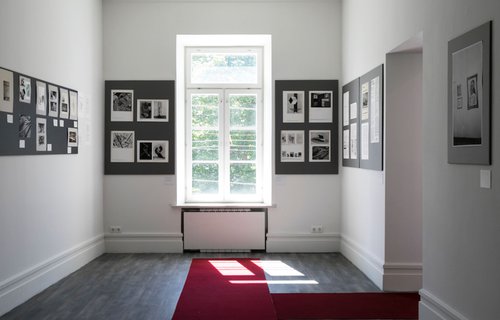House of Culture 'GES-2'. Photo: Anya Todich. Courtesy of GES-2
The rise and fall of Moscow’s private museums: a study in oligarchic museology
Since the late 2000s, private museums have been the pride and joy of the Russian capital. Now, as their owners are facing lawsuits at home and sanctions abroad, their future is hanging in the balance. Writer and art critic Dmitri Bavilsky reflects on the impact they have made on the fabric of the city.
Zotov, a new exhibition space which opened in Moscow just last year in a restored former bread-baking factory, is located in what was once a wasteland in the city’s Krasnaya Presnya district. The area has become gentrified: industrial zones destroyed, factories and businesses shut down and demolished; few examples of industrial architecture have survived. One of the lucky few is Zotov, this round, four-storey drum-type building of a former bakery, which has been tastefully restored. Now, however, this exceptional landmark of Soviet Constructivism is surrounded by three 44-storey residential towers resembling candles. They all face the exhibition hall – or constructivist space, as the curators put it - which opened triumphantly with an ambitious exhibition to mark the centenary of Constructivism as a style in both art and everyday life in the USSR. This painstakingly curated and impressive inaugural project called ‘1922. Constructivism. The Beginning’ was spread out over two floors of the Zotov to bring together in all their variety the Avant-Garde movements of early 20th century Russia into the assemblance of a generalized Constructivism. Naturally, this was a controversial approach.
Zotov has become the apotheosis of the trend towards large, private museums in Moscow. All of these kinds of institutions are located in unexpected places around the city, previously unfamiliar to the frequenters of gallery openings. None of them would have imagined strolling around in such remote backwaters, hitherto transformed thanks to Russia’s leading business entrepreneurs and developers.
New and exciting museum spots on the capital's map are one of the most important features that unite a whole series of private institutional projects opened over recent years. All of them are carefully constructed or reconstructed, as if each one is trying to surpass the last in terms of grandeur and comfort. However now that Russia is under sanctions and the success of its economic performance is far from clear, it seems fair to assume that the Zotov may be the last such project.
In Russia there lurks the suspicion that these institutions have a dual purpose. All the more so because oligarchic museum-building, which is accessible only to very few businessmen on Russia's Forbes list, is still a recent phenomenon. On the one hand, there is the businessman's desire to cement his reputation as an enlightened and cultural person, but on the other, such projects almost always increase the appeal and value of the properties they have acquired.
Museums are centres of the metropolis' mental infrastructure, which makes the urban landscape itself, imbued with such ambiguity in meaning, begin to work ‘against the people’. The emergence of new cultural territories is almost always associated with outbreaks of creeping gentrification, when a wealthy individual has gained a piece of urban real estate, most often the territory of some factory or other that has been permanently shut down. Repurposing elevates the structure and architecture of a former work zone, scrubbing and cleaning up the fabric of urban life around it. In order to emphasise the riches and treasures of the latest museum it is somehow necessary to scrape everything around it down to a lifeless, deadened state.
For example, the industrial land that now houses the ‘constructivist Zotov space’ was bought from the Moscow government back in 2006 by businesses owned by Alisher Usmanov and Vasily Anisimov. After that, VTB Bank began to reconstruct and built up the new Zotov museum.
The Institute of Russian Realist Art was opened by banker Alexei Ananyev in 2011 on the site of a former textile factory built in 1823 on Derbenevskaya Embankment, far from the centre of the capital. It is a fine example of Russian industrial architecture, the jewel in the crown of what is an institute-museum, equipped with some of the world's most impressive display and storage facilities. Ananyev fled Russia because of a lawsuit filed against him by the state’s Investigation Committee. He was accused of bribing government officials as well as other financial crimes. After he left Russia, the art collection at the Institute of Russian Realist Art was seized. It has not been seen in public for several years now, despite the fact that Ananyev collected ‘time-honoured’ art that was completely devoid of any deep relevancy. In Russia this kind of art is known as ‘correct art’.
Collecting politically trustworthy - or ‘correct’ - art did not save Boris Mints from persecution. He founded the Museum of Russian Impressionism in 2016. And while art historians argue about the content of the overly broad term ‘Russian Impressionism’, the Museum of Russian Impressionism, built into the complex of historic buildings of the Bolshevik confectionery factory (opened in 1855), was quickly loved by the Moscow public for its retrospectives of second and third rate Russian painters. Mintz himself was forced to leave Russia a few years after the museum opened, but continues to fund its work and exhibition programmes from abroad.
The Garage Museum of Contemporary Art, located in Gorky Park, is for the time being not staging any new exhibitions, although it does still operate as a library, archive, film club, bookstore, restaurant, and children's art centre. The Garage is housed in a former restaurant from the Soviet times, an initiative of Daria Zhukova and Roman Abramovich, which became known for a unique renovation project by Rem Koolhaas. A typical Soviet building from 1968 designed by architects Igor Vinogradsky and Igor Pyatkin in the spirit of Brezhnev brutalism, the Dutch starchitect has restored it with such care and attention, as if it were a unique baroque masterpiece.
Koolhaas' renovation preserves and plays with all the historical layers of the Garage, which became famous almost overnight for its exhibitions of top-tier international artists, from Mark Rothko (1903-1970) to Takashi Murakami (b.1962). But since the end of February 2022 the museum has suspended all exhibition activities and is yet to announce any plans, while Abramovich is struggling with international sanctions.
Political circumstances have also disrupted the smooth schedule of the ‘house of culture’ GES-2 which businessman Leonid Mikhelson commissioned Renzo Piano to reconstruct in the centre of Moscow. The building of an ordinary city power plant, which was constantly in operation from 1907 until 2006, has been turned into a brilliant, multifunctional cultural space, architecturally reminiscent of a Gothic cathedral. The V-A-C Foundation, established by Michelson also had to shut down the operations of its first international exhibition space in Venice, called Palazzo delle Zattere. The building was even taken over by local rioters in Spring 2021.
‘Oligarchic museology’ started some fifteen years ago in 2007 with the opening of the cultural cluster Winzavod, which created an immediate, positive buzz which endured. On the territory of the white and red wine production and bottling halls, as well as on the premises accompanying the Moscow Bavaria winery from before the Revolution, a whole cluster of contemporary art galleries and art shops was opened.
Located behind the Kursky Railway Station, the Winzavod was so overwhelmingly successful that a year later, in 2008, another art cluster, Artplay Design Centre, was opened in the same area. Quickly, these art spaces became a popular playground of the capital's students, intellectuals, and creative classes. Significantly, both Winzavod and Artplay launched large, international exhibition projects within the frame of the Moscow International Biennale of Contemporary Art, the ninth edition of which was cancelled this year.
The emergence and characteristics of these flagships of oligarchic museology seem to perfectly embody an entire historical period. Until recently this era was called ‘the time of stability’ and ‘the fat years’, now it is increasingly spoken of as ‘the new stagnation’ and ‘retrogressive movement’. How this period, in which not only the hipster Winzavod and Artplay opened, but also the large-scale Garage, GES-2, and Zotov, as well as the ‘faithful’ Institute of Russian Realist Art and the Museum of Russian Impressionism, will be called in the near future, is still not known.
Zotov Centre
Museum of Russian Impressionism
Museum of Russian Impressionism
Garage Museum for Contemporary Art
Garage Museum for Contemporary Art
GES-2
Winzavod Centre for Contemporary Art
Winzavod Centre for Contemporary Art
Artplay Design Centre






